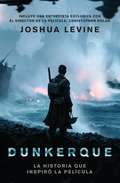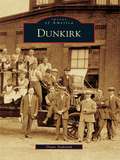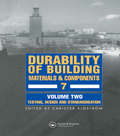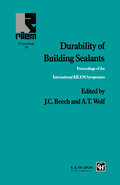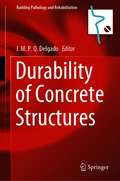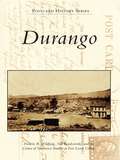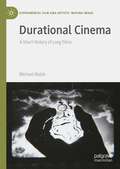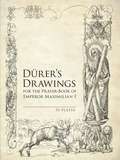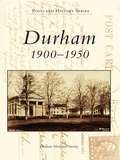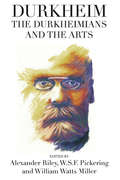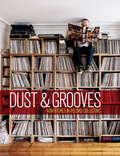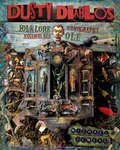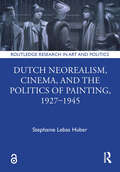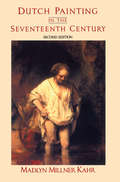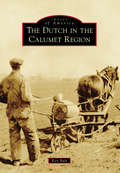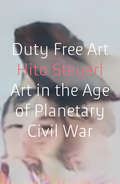- Table View
- List View
Dunkerque
by Joshua LevinePronto una gran película de Christopher Nolan.La épica historia de Dunkirk, mayo de 1940: cuando más de 300.000 tropas aliadas atrapadas fueron dramáticamente rescatadas de la destrucción a manos de la Alemania Nazi por una extraordinaria evacuación vía marítima.La historia real de los soldados, marineros, aviadores y civiles implicados en la evacuación durante los nueve días desde el 27 de mayo a 4 de junio de 1940 se ha convertido en leyenda.Ahora el tema de la película del director Christopher Nolan, protagonizada por Kenneth Branagh, Tom Hardy, Cillian Murphy, Mark Rylance y Harry Styles. La historia que Winston Churchill describió como un «milagro» es detallada por el autor best seller Joshua Levine en su contexto completo y avasallador.Incluye nuevas entrevistas con veteranos y supervivientes, este libro va más allá de las escenas para explorar la vida real de esos soldados, bombardeados y ametrallados en las playas durante días, sin comida ni municiones; los civiles cuyas embarcaciones fueron sobrecargadas; los aviadores que arriesgaron sus vidas para comprarle tiempo valioso en tierra a sus compañeros; y aquellos que no lograron escapar.Contada desde las perspectivas terrestre, marítima y aérea, Dunkirk™ por Joshua Levine es una narración dramática de esta gloriosa derrota.
Dunkirk
by Diane AndrasikOn the shores of Lake Erie, the city of Dunkirk rose into a commercial fishing center, lake port, and successful industrial city. The lake provided an invaluable natural resource and allowed the coastal community to flourish. The inspired leadership of individual residents, coupled with the arrival of waves of hardworking immigrants, contributed to Dunkirk's place in the industrial movement of the early 1800s to the mid-1900s. As it grew, the community of Dunkirk hosted steamships in its harbor in 1810, greeted the arrival of the first train to connect the Atlantic and the Great Lakes in 1851, and produced massive steam locomotives for over half a century.
Dunwoody (Images of America)
by Valerie M. BiggerstaffThe name Dunwoody developed from a spelling error. Soon after the Civil War ended, Maj. Charles Dunwody left nearby Roswell to settle in a new community and decided to start a post office. The post office added one "o" to his name, and from that moment, the area was known as Dunwoody. Beginning as a humble farming community, Dunwoody grew into a popular suburb of Atlanta. Careful growth control, under the supervision of the Dunwoody Homeowners Association, kept Dunwoody from becoming too developed. The Dunwoody Preservation Trust works to identify and save Dunwoody's historical landmarks. The Dunwoody Farmhouse, located at the central crossroads of the community, is one of the trust's success stories and is enjoyed by many.
Duologues for All Accents and Ages
by Jean Marlow Eamonn JonesFirst Published in 2003. Routledge is an imprint of Taylor & Francis, an informa company.
Durability Design of Concrete Structures
by A. Sarja E. VesikariConcrete structures can be designed for durability by applying the principles and procedures of reliability theory combined with traditional structural design. This book is the first systematic attempt to introduce into structural design a general theory of structural reliability and existing calculation models for common degradation processes. It
Durability of Building Materials & Components 7 vol.2
by Christer SjFirst Published in 2004. In the process of harmonising the wide-ranging interests in this field, the series of international conferences Durability of Building Materials and Components, of which this is the seventh, has played a decisive role by bridging between different material and product areas and by giving researchers and practitioners an opportunity to meet every third year to discuss the latest R&D achievements. This conference covers a number of themes ranging from theoretical aspects of service life prediction to the practical implementation of knowledge on durability of building products in standards. This collection is the proceedings and will serve as a valuable reference to all interested in the wide and stimulating area of durability and service life prediction in building and construction. This is Volume Two on Testing, Design and Standardisation.
Durability of Building Materials and Components 7: Proceedings of the seventh international conference
by Christer SjöströmThese books contain articles on R&D into the major aspects of durability and service life prediction of building materials and components, as well as theoretical aspects of methods and modelling of prediction, description of degradation environment by use GIS, as practical implementation of knowledge on durability in maintenance procedures and in standardisation and regulations.
Durability of Building Sealants: 4th Volume
by A. T. WolfThis volume contains the proceedings of the Second International Symposium on Durability of Building Sealants, held under the joint auspices of the British Building Research Establishment Ltd (BRE) and the International Union of Testing and Research Laboratories for Buildings and Structures (RILEM) Technical Committee 139-DBS. The twelve contributions in this volume reflect the wide spectrum of current research and provide for the development of an International Standard on Sealant Durability.
Durability of Building Sealants: 4th Volume
by J.C. Beech A.T. WolfThis book presents the papers given at the RILEM Seminar held at the Building Research Establishment, Garston, UK in October 1994. The book provides an opportunity for researchers to review up-to-date progress towards the achievement of the objectives of the standardisation of laboratory techniques of sealants in the variety of service conditions to which they are exposed.
Durability of Concrete Structures (Building Pathology and Rehabilitation #16)
by J. M. P. Q. DelgadoThis book provides a collection of recent research works, related to structural stability and durability, service life, reinforced concrete structures, recycled materials, and sustainability with endogenic materials. Intended as an overview of the current state of knowledge, the book will benefit scientists, students, practitioners, lecturers and other interested parties. At the same time, the topics covered are relevant to a variety of scientific and engineering disciplines, including civil, materials and mechanical engineering.
Durability of Concrete Structures: Investigation, repair, protection
by Geoff MaysThis book is concerned with the long term durability of concrete as a structural material as used in the construction of buildings, bridges, roads, marine and civil engineering structures. It discusses the fundamental reasons for the deterioration of concrete over time and available techniques for detecting, remedying and preventing the deteriorati
Durango
by Center of Southwest Studies at Fort Lewis College Nik Kendzioski Frederic B. WildfangThis collection presents a postcard tour of Durango and its environs and provides keen insight into the history and colorful character of this area, which has been a vibrant center of Southwestern Colorado for more than a century. A brief history of postcards as a convenient medium for sharing messages--and as a revolutionary departure from Victorian-era long letters--is included here as well. The Center of Southwest Studies at Fort Lewis College is pleased to present these evocative images gathered by the indefatigable Nina Heald Webber.
Durational Cinema: A Short History of Long Films (Experimental Film and Artists’ Moving Image)
by Michael WalshThis book argues for a durational cinema that is distinct from slow cinema, and outlines the history of its three main waves: the New York avant-garde of the 1960s, the European art cinema in the years after 1968, and the international cinema of gallery spaces as well as film festivals since the 1990s. Figures studied include Andy Warhol, Ken Jacobs, Chantal Akerman, Marguerite Duras, Claude Lanzmann, James Benning, Kevin Jerome Everson, Lav Diaz, and Wang Bing.Durational cinema is predominantly minimal, but has from the beginning also included a more encompassing or encyclopedic kind of filmmaking. Durational cinema is characteristically representational, and converges on certain topics (the Holocaust, deindustrialization, the experience of the working class and other marginalized people), but has no one meaning, signifying differently at different moments and in different hands. Warhol’s durational cinema of subtraction is quite different from Jacobs’s durational cinema of social disgust, while Lav Diaz’ durational sublime is quite different from Kevin Jerome Everson’s unblinking studies of African-American working people.
Durch Markenführung und Innovation zu mehr Nachhaltigkeit im Unternehmen: Wie Sie Nachhaltigkeit bei gleichzeitigem wirtschaftlichen Erfolg erreichen (Edition Nachhaltig wirtschaften)
by Christian Schlimok Bastian von LehstenDas Buch zeigt, wie Unternehmensstrategie, Markenstrategie und Nachhaltigkeitsstrategie effizient kombiniert werden können. Die Autoren erklären, wie Markenführung und Innovation in verknüpfter Form mehr Nachhaltigkeit in Unternehmen erzeugen und welch schmaler Grat oft zwischen Green Marketing und Greenwashing liegt. Sie analysieren die Bedeutung von ganzheitlicher Markenführung und Innovationsprozessen und zeigen auf, wie Unternehmen daraus wirtschaftlichen Erfolg erzeugen und nachhaltiger agieren können. Außerdem geben sie Handlungsimpulse für die eigene Markenkommunikation im Zusammenspiel mit Innovationsmanagement und Nachhaltigkeitsstrategie.
Durer's Drawings for the Prayer-Book of Emperor Maximilian I: 53 Plates
by Albrecht DurerHoly Roman Emperor and King of the Germans Maximilian I was Albrecht Dürer's main patron from 1512 onward. These 45 pages of marginal drawings for the ruler's prayer book, unknown till their 1808 facsimile publication, reveal the artist's lighthearted and witty side. Includes 8 additional drawings by other artists and a new Introduction.
Durham: 1900-1950 (Postcard History)
by Durham Historical SocietyDurham: 1900-1950 presents a unique view into the history of Durham through vintage postcards. A small town of approximately 7,000 people, Durham is located in central Connecticut between New Haven and Hartford. A quintessential New England town, Durham was settled in 1699 and has a vast and exceptional history. During the postcard era, images of historic homes, celebrations, businesses, and other areas of interest in town were sent all across the state and country and brought a little piece of Durham to the recipient. These snapshots of town history illustrate the many changes and transitions that have made Durham what it is today.
Durkheim, the Durkheimians, and the Arts
by W.S.F. Pickering Alexander Tristan Riley William Watts MillerUsing a broad definition of the Durkheimian tradition, this book offers the first systematic attempt to explore the Durkheimians' engagement with art. It focuses on both Durkheim and his contemporaries as well as later thinkers influenced by his work. The first five chapters consider Durkheim's own exploration of art; the remaining six look at other Durkheimian thinkers, including Marcel Mauss, Henri Hubert, Maurice Halbwachs, Claude Lévi-Strauss, Michel Leiris, and Georges Bataille. The contributors-scholars from a range of theoretical orientations and disciplinary perspectives-are known for having already produced significant contributions to the study of Durkheim. This book will interest not only scholars of Durkheim and his tradition but also those concerned with aesthetic theory and the sociology and history of art.
Dust & Grooves
by Eilon Paz RzaDust & Grooves: Adventures in Record Collecting is an inside look into the world of vinyl record collectors in the most intimate of environments--their record rooms. Compelling photographic essays from photographer Eilon Paz are paired with in-depth and insightful interviews to illustrate what motivates these collectors to keep digging for more records. The reader gets an up close and personal look at a variety of well-known vinyl champions, including Gilles Peterson and King Britt, as well as a glimpse into the collections of known and unknown DJs, producers, record dealers, and everyday enthusiasts. Driven by his love for vinyl records, Paz takes us on a five-year journey unearthing the very soul of the vinyl community.From the Hardcover edition.& Grooves is a celebration of passion and discovery and a tribute to the spirit of a thriving movement.
Dust of the Zulu: Ngoma Aesthetics after Apartheid
by Louise Meintjes Tj LemonIn Dust of the Zulu Louise Meintjes traces the political and aesthetic significance of ngoma, a competitive form of dance and music that emerged out of the legacies of colonialism and apartheid in South Africa. Contextualizing ngoma within South Africa's history of violence, migrant labor, the HIV epidemic, and the world music market, Meintjes follows a community ngoma team and its professional subgroup during the twenty years after apartheid's end. She intricately ties aesthetics to politics, embodiment to the voice, and masculine anger to eloquence and virtuosity, relating the visceral experience of ngoma performances as they embody the expanse of South African history. Meintjes also shows how ngoma helps build community, cultivate responsible manhood, and provide its participants with a means to reconcile South Africa's past with its postapartheid future. Dust of the Zulu includes over one hundred photographs of ngoma performances, the majority taken by award-winning photojournalist TJ Lemon.
Dusty Diablos: Folklore, Iconography, Assemblage, Ole!
by Michael Demeng Tonia DavenportAssemblage ole! Bring your artistic yearnings and sense of adventure along on a journey to the land of Dusty Diablos. Inspiration seeps from every page, and inside here you'll find: a tasty mix of ancient folklore (from the ancient metropolis of Teotihuacán to the miracle witnessed by Juan Diego); colorful pop culture (who knew that Western-Horror was its own film genre or that there's an entire island overrun with misfit dolls?) and informative art-making how-tos (like the Tricky Burnt Paper Routine and crafting your own Nicho). Join author Michael deMeng on an artist's pilgrimage south of the border and experience a culture as rich as it is beautiful and as genuine and down-to-earth as it is humorous and fascinating. While being mesmerized by all the amazing assemblage pieces, you also learn such nifty things as: Mixing up Michael's favorite paint washes to achieve "rusty" results in your own work Crafting your own slithering serpent Creating miniature story boxes Aging bottle caps with beer and so much more! Indulge your senses and come along for a trip through crowded marketplaces, a thrilling taxicab ride and the intoxicating festivities of Dia de los Muertos and discover the allure of Dusty Diablos. You might not want to leave.
Dutch Neorealism, Cinema, and the Politics of Painting, 1927–1945 (Routledge Research in Art and Politics)
by Stephanie Lebas HuberThis study offers a radically new perspective on Dutch Neorealism, one that emphasizes the role of film as an apparatus, the effects of which, when emulated in painting, can reproduce the affective experience of film-watching.More of a tendency than a tightly defined style or "ism," Neorealism is the Dutch variant of Magic Realism, an uncanny mode of figurative painting identified with Neue Sachlichkeit in Germany and Novecento in Italy. Best represented by the Dutch artists Pyke Koch, Carel Willink, Charley Toorop, Raoul Hynckes, Dick Ket, and Wim Schuhmacher, Neorealism—as demonstrated in this book—depicted societal disintegration and allegories of looming disaster in reaction to the rise of totalitarian regimes and, eventually, the Nazi Occupation of The Netherlands. The degree to which these artists exhibited either revolutionary or reactionary sentiments—usually corresponding with their political affiliation—is one of the central problematics explored in this text.The book will be of interest to scholars working in art history, World War II history, and film studies.
Dutch Painting In The Seventeenth Century
by Madlyn Millner KahrThis new edition of an established survey of the Golden Age of Dutch painting has been revised, corrected, and updated in the text, notes, and bibliography as a result of new scholarship. The author has written a new preface to this edition. Rembrandt, Vermeer, Hals, Ruisdael, Cuyp, de Witte, van Goyen, van de Velde, Hobbema, Fabritius, de Hooch, and Saenrendam are some of the painters included and discussed.
Dutch Post-war Fiction Film through a Lens of Psychoanalysis (Framing Film)
by Peter VerstratenDutch Post-war Fiction Film through a Lens of Psychoanalysis is a sequel to Humour and Irony in Dutch Post-war Fiction Film (AUP, 2016), but the two studies can be read separately. Because of the sheer variety of Fons Rademakers’ oeuvre, which spans ‘art’ cinema and cult, genre film and historical epics, each chapter will start with one of his titles to introduce a key concept from psychoanalysis. It is an oft-voiced claim that Dutch cinema strongly adheres to realism, but this idea is put into perspective by using psychoanalytic theories on desire and fantasy. In the vein of cinephilia, this study brings together canonical titles (Als twee druppels water; Soldaat van Oranje) and little gems (Monsieur Hawarden; Kracht). It juxtaposes among others Gluckauf and De vliegende Hollander (on father figures); Flanagan and Spoorloos (on rabbles and heroes); De aanslag and Leedvermaak (on historical traumas); and Antonia and Bluebird (on aphanisis).
Dutch in the Calumet Region, The
by Ken BultThe first Dutch immigration to the Calumet Region took place in the second half of the 19th century. The area settled by the Dutch spans roughly from what today is part of Chicago's Southside to the western border of Griffith, Indiana, and includes the communities of Roseland, South Holland, Lansing, Munster, and Highland. Once in the region, the Dutch carved communities out of the wilderness by clearing and draining the land and raising large families; descendants of these immigrants still populate the region. Even before the towns existed and on into the 20th century, the Dutch were a community that transcended the borders they established. Evidence of the early settlers is found all around the Calumet Region. It is in the churches they built, the businesses they started, and the loved ones they buried.
Duty Free Art: Art in the Age of Planetary Civil War
by Hito SteyerlWhat is the function of art in the era of digital globalization?How can one think of art institutions in an age defined by planetary civil war, growing inequality, and proprietary digital technology? The boundaries of such institutions have grown fuzzy. They extend from a region where the audience is pumped for tweets to a future of “neurocurating,” in which paintings surveil their audience via facial recognition and eye tracking to assess their popularity and to scan for suspicious activity. In Duty Free Art, filmmaker and writer Hito Steyerl wonders how we can appreciate, or even make art, in the present age. What can we do when arms manufacturers sponsor museums, and some of the world’s most valuable artworks are used as currency in a global futures market detached from productive work? Can we distinguish between information, fake news, and the digital white noise that bombards our everyday lives? Exploring subjects as diverse as video games, WikiLeaks files, the proliferation of freeports, and political actions, she exposes the paradoxes within globalization, political economies, visual culture, and the status of art production.
